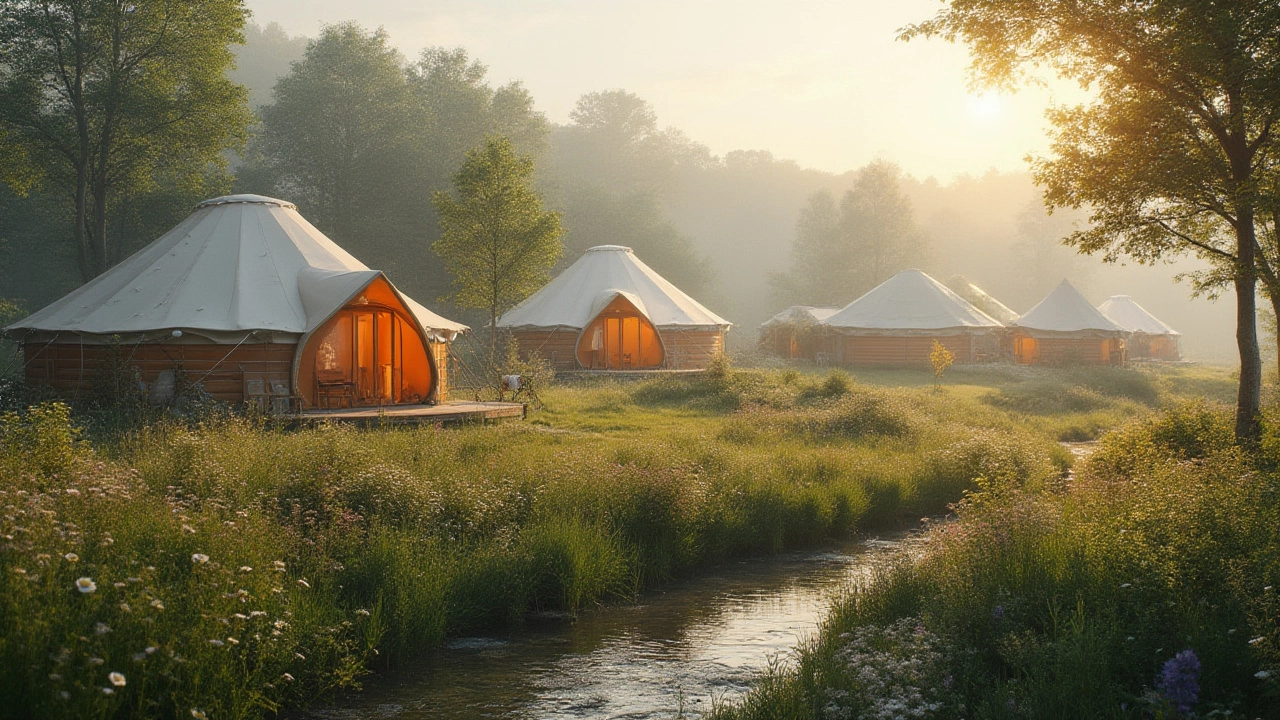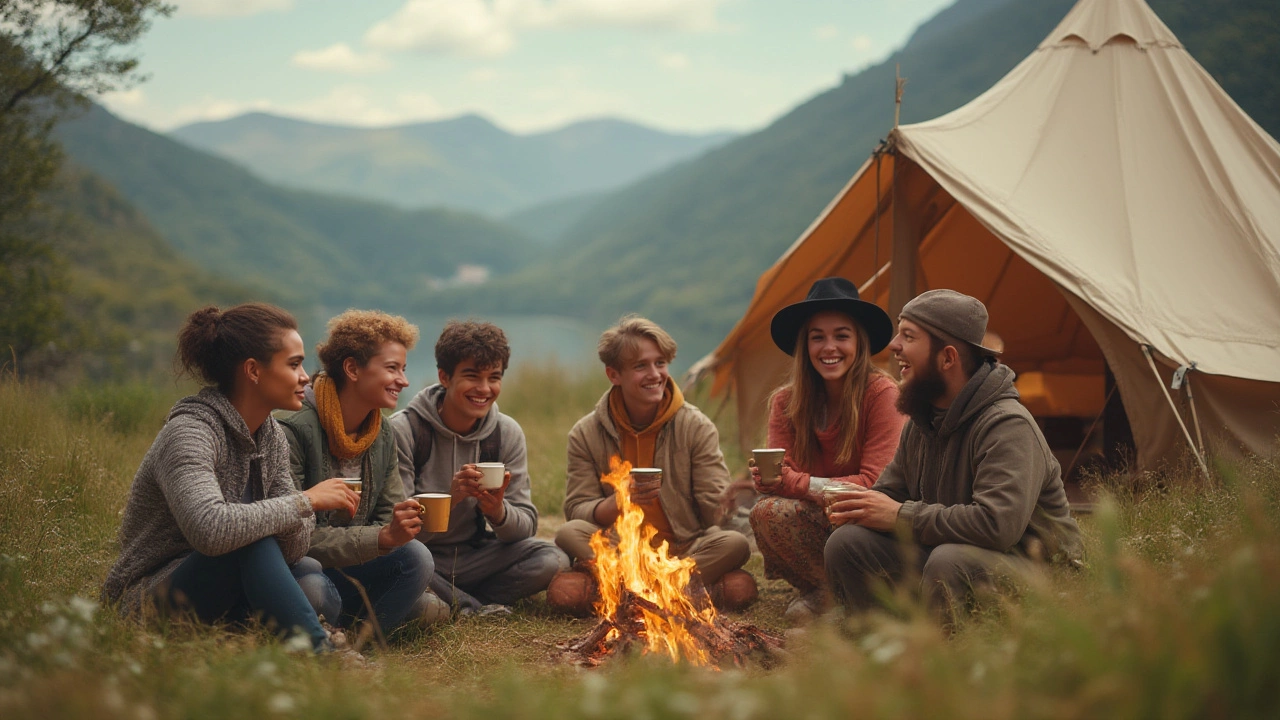Is Glamping Bad for the Environment? Eco-Impact Facts and Tips

If someone had told me ten years ago that you could have a plush bed, hot showers, and Wi-Fi in the wild, I’d have laughed. Glamping, which stands for glamorous camping, has taken the travel world by storm recently, and the funny thing is, nobody can agree if it’s a guilty pleasure or a new way to go green. I get it—luxury tents in quiet forests sound dreamy. But is glamping actually kind to the planet, or just a cleverly marketed escape from city stress? If you’re looking for real answers about glamping and its eco-credentials, you’re in the right place. Let’s pull back the canvas flap and see what’s really going on behind the fairy lights and fire pits.
The Carbon Footprint of Glamping vs. Traditional Camping
The biggest hype around glamping is all about eco charm. Velvet pillows, private baths, solar-powered lamps—it all sounds so much greener than the average hotel stay. But let’s get painfully honest: how does glamping stack up against old-school camping or even a weekend at a local eco-cottage? Surprisingly, it depends on how glamping sites are built and run.
Traditional camping tends to leave a lighter footprint because the tent is temporary and you’re often using minimal gear. But glamping usually involves semi-permanent structures—think wooden decks, big canvas tents, yurts, or even tiny cabins. According to a 2022 study from the Sustainable Travel Institute, a standard glamping pod has 2 to 3 times the carbon footprint of a basic nylon camping tent if you count building materials and delivery. Tents can be set up anywhere, dismantled without much trace, while glamping domes or huts can require heavy construction machinery, paved roads, and plumbing. And those stylish off-grid bathrooms? The composting toilets are a plus, but flushing toilets and hot tubs on stilts aren’t doing the planet any favors unless strictly managed.
Here’s a simple comparison to break down average annual emissions per guest:
| Accommodation Type | Estimated Annual CO2 Emissions (kg/guest) |
|---|---|
| Traditional Tent Camping | 35 |
| Glamping Yurt/Pod | 95 |
| Eco-Lodge | 120 |
| Standard Hotel Room | 250 |
Surprisingly, glamping isn’t top of the emissions charts, but it’s not the “leave-no-trace” hero it’s made out to be. But, if a glamping site genuinely uses recycled materials or powers everything from renewables, its footprint can shrink a lot. Here’s a little secret: some glamping sites in British Columbia use water reclaimed from rain, hyper-efficient wood-burning stoves, and even repurposed wine barrels for soaking tubs. So, the spectrum is wide.
All in all, the real environmental impact of glamping depends on the location, how the structures are built, and what energy sources are in use. The greenest glamping spots do a solid job at being kind to nature, but those that don’t could easily edge closer to a regular hotel with extra throw pillows and a scented candle.
Resource Use: Is Glamping Really Low Impact?
You might think that by heading into the woods, you’re living simply, using less, and treading lightly. But glamping can gobble up resources in sneaky ways, especially water and electricity. Here’s where it gets tricky: many glamping sites offer luxurious amenities that traditional campsites just don’t. Picture hot tubs, full-size fridges, electric heaters, rain showers, and yet somehow you’re expected to believe it’s eco-friendly because ‘nature is just outside the flap.’
Modern glamping setups can draw anywhere from 5 to 10 times more water and electricity per guest per day than a basic tent campsite. Hot tubs and power showers burn through entire tank refills in a day or two. Even small touches like in-floor heating or designer lighting can drag up the energy bill. I stayed with my husband Gareth at a glampsite on Vancouver Island that boasted EV charging and solar panels. The solar panels powered the lights and Wi-Fi router, but the heaters ran on propane and the water for the soaking tubs came from the main grid anyway. The site was honest about their limitations, but many others aren’t so transparent.
What about waste? Plenty of glampsites supply single-use toiletries in cute bottles, toss disposable slippers into every tent, and keep firepits burning all evening long. Of course, you can find places fighting this trend: they refill amenities, operate composting toilets, and ban single-use plastics from the property. Look for certifications like Green Key or LEED ratings—these usually mean the glamping site tries harder for sustainability.
Bottom line: glamping can be easy on resources, but only if you pick a site that takes its eco-duty as seriously as its décor. Ask the site manager before you book: Do they use rainwater catchment? Are recycling and composting available? Is energy sourced partly or mostly from renewables? What’s their waste policy? These questions weed out the posers from the real green operators.

Wildlife, Land, and Local Communities: The Double-Edged Sword
One of the most exciting pitches in glamping is, “Come sleep under the stars and wake up to birdsong!”—and honestly, it feels magical to do exactly that. But if too many people show up, or if the pods are built in places where wildlife hang out or migratory routes cross, we’re suddenly talking about real disruption. Construction (even eco-minded) can tear up roots, flatten nests, or scare away shy animals. A 2023 field survey in Alberta counted a 28% drop in small mammal sightings around intensively used glamping sites compared to untouched patches one kilometer away. The main culprit? Increased foot traffic, bush clearing, and—nobody is surprised—people leaving snacks and trash out at night.
There’s also the issue of land use. Glamping operators sometimes lease or buy land in delicate habitats (forest edges, riverbanks, meadows) and spruce it up for guests. For the best, this means restoring trails, planting trees, and educating guests about local flora and fauna. For the worst, it means cutting corners for quick setup, or quietly ignoring regulations about what kind of land can support heavy footfall. Local communities benefit when glamping site owners hire nearby residents, buy produce from nearby farms, and promote indigenous tourism, but sometimes the opposite happens: revenue leaks out to international investors and turnover is so high, it doesn’t create any stable jobs nearby.
So, when you’re looking for an authentic, responsible glamping getaway, check if:
- The site collaborates with local conservationists or researchers.
- It restores or protects land (not just exploits it!).
- Staff come from the local area and partner with indigenous guides or craftspeople.
- Guests are taught about wildlife safety, waste reduction, and not wandering off official paths.
Good glampsites have strong wildland ethics—they use boardwalks over sensitive meadows, require waste pack-out, and actively try to reduce noise after dusk. Bad ones advertise “untouched wilderness” and leave secret scars where cabins used to stand after business slows down. For 2025, most communities in western Canada are tightening zoning bylaws around glamping pods to prevent habitat damage. As much as glamping is about comfort, it should never jeopardize the wildness that makes it special to start with.
How to Make Your Glamping Trip as Green as Possible
If you’re dreaming of a glamping break but don’t want to trade comfort for a guilty conscience, you can make a big difference with your choices. First, do a deep dive into your glamping provider—don’t just believe the “eco” sticker on their website. If they use solar panels, ask what percentage of their power actually comes from the sun. If they boast about “local food,” ask whose farm it comes from. I’ve found that honest places don’t dodge these questions; they’re proud to chat about their green efforts, and they usually post annual eco reports online.
Another quick hack: travel light, and keep your personal footprint low. Bring your own refillable toiletries, pack soft slippers instead of using disposables, and say no to unnecessary towel changes. My secret weapon? A tiny reusable coffee cup and bamboo cutlery kit—works wonders and stirs up fun conversations with other guests. If you find yourself at a place with no composting, quietly collect your food scraps and toss them in municipal compost on your way home.
For a truly sustainable trip:
- Pick glampsites close to home or reachable by train/bus whenever you can (cut the carbon of flying).
- Choose sites using renewable energy, rainwater catchment, or built from reclaimed materials.
- Carpool, rent an EV, or use a bike for that last stretch from station to site.
- Stick to trails, keep music volume down, and never feed animals (not even the adorable chipmunks that look positively desperate for your granola).
- Support site-run conservation programs or local guides—skip the big chains if you can.
- Use biodegradable soaps and cleaning products when you shower or wash up.
- If you’re up for it, offset your carbon emissions with a reputable project or donate to a cause that protects local wilderness nearby.
Each small choice adds up. If enough glampers demand real green standards, operators will have to step up their game—which means your trip won’t only be wildly comfortable, but part of something better for the planet. Now, that’s real luxury.